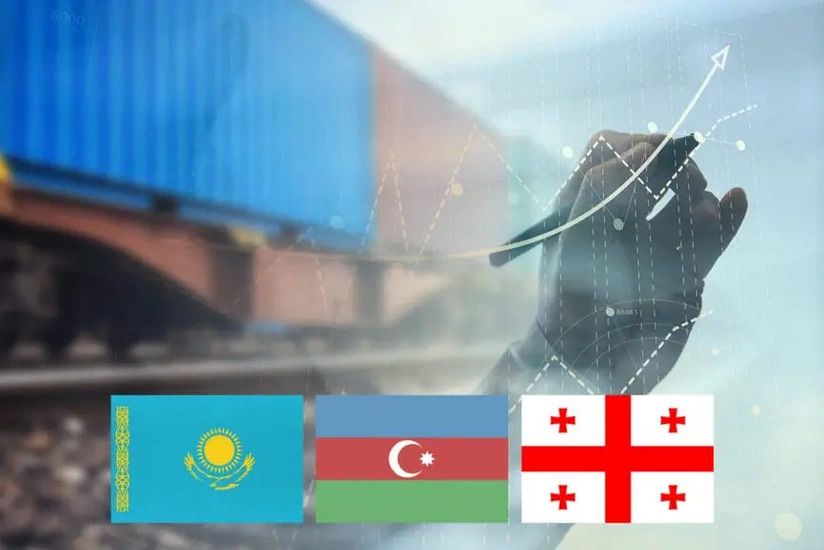Unified tariffs to boosts Middle Corridor trade

In an era where global supply chains are being redefined and geopolitical fault lines are shifting, the emergence of the Trans-Caspian International Transport Route—commonly known as the Middle Corridor—offers a compelling alternative to traditional East-West trade routes. The recent agreement between the railway operators of Azerbaijan, Kazakhstan, and Georgia to establish a unified long-term tariff across the entire corridor marks a pivotal moment in the evolution of Eurasian logistics. This is not merely a technical adjustment; it is a strategic alignment that could reshape the economic geography of the region.
The Middle Corridor stretches from China through Central Asia, across the Caspian Sea, through the South Caucasus, and onward to Europe. It bypasses both Russia and Iran, offering a politically neutral and economically efficient route for freight transport. In the wake of global tensions, sanctions, and the need for diversified trade channels, this corridor has gained unprecedented relevance. It is no longer a secondary option—it is fast becoming a primary artery for Eurasian commerce.
The significance of this corridor lies not only in its geography but in its potential to foster regional cooperation and economic integration. Azerbaijan, Kazakhstan, and Georgia are not merely transit countries; they are strategic stakeholders in a new vision for Eurasia. Their decision to harmonize tariffs across the corridor is a bold step toward eliminating logistical bottlenecks and enhancing the competitiveness of the route. It sends a clear message to global markets: the Middle Corridor is open for business, and it is here to stay.
The agreement, signed during the VII International Transport and Logistics Business Forum “New Silk Way” in Almaty, is embedded within a broader action plan aimed at removing “bottlenecks” along the route. These bottlenecks—whether infrastructural, procedural, or regulatory—have long hindered the corridor’s full potential. By committing to joint development of port, rail, and logistics infrastructure, and by embracing digitalization of procedures, the three countries are laying the groundwork for a seamless and modern transport ecosystem.
This is not just about trains and tariffs. It is about vision, resilience, and strategic foresight. The Middle Corridor offers a lifeline to landlocked Central Asian economies, a gateway for Chinese goods to reach European markets, and a bridge for European exporters to access Asia. It is a corridor of opportunity, and the recent trilateral agreement is a testament to the political will required to unlock that opportunity.
Moreover, the unified tariff structure simplifies the cost calculation for shippers and logistics companies, making the corridor more attractive and predictable. In a world where time is money and uncertainty is the enemy of investment, such predictability is invaluable. It reduces friction, accelerates decision-making, and enhances the corridor’s appeal to global logistics players.
The strategic importance of the Middle Corridor cannot be overstated. It is a counterbalance to the Northern Corridor and the Southern Corridor. It offers a stable, secure, and efficient route that aligns with the interests of a wide array of stakeholders—from multinational corporations to regional governments. Its development is not just a regional priority; it is a global necessity.
The trilateral agreement also reflects a deeper geopolitical reality: the rise of regionalism in a multipolar world. As global powers recalibrate their strategies, regional actors are stepping up to shape their own destinies. Azerbaijan, Kazakhstan, and Georgia are demonstrating that cooperation, not confrontation, is the key to progress. Their alignment on the Middle Corridor is a model for others to follow.
In conclusion, the Middle Corridor is more than a transport route—it is a strategic project that embodies the aspirations of a new Eurasia. The recent agreement on unified tariffs is a milestone that will accelerate its development and enhance its global standing. As the world looks for alternatives to congested and politicized trade routes, the Middle Corridor stands out as a beacon of connectivity, cooperation, and economic promise. The future of Eurasian logistics is being written today—and the ink is flowing through Baku, Almaty, and Tbilisi.
Here we are to serve you with news right now. It does not cost much, but worth your attention.
Choose to support open, independent, quality journalism and subscribe on a monthly basis.
By subscribing to our online newspaper, you can have full digital access to all news, analysis, and much more.
You can also follow AzerNEWS on Twitter @AzerNewsAz or Facebook @AzerNewsNewspaper
Thank you!

